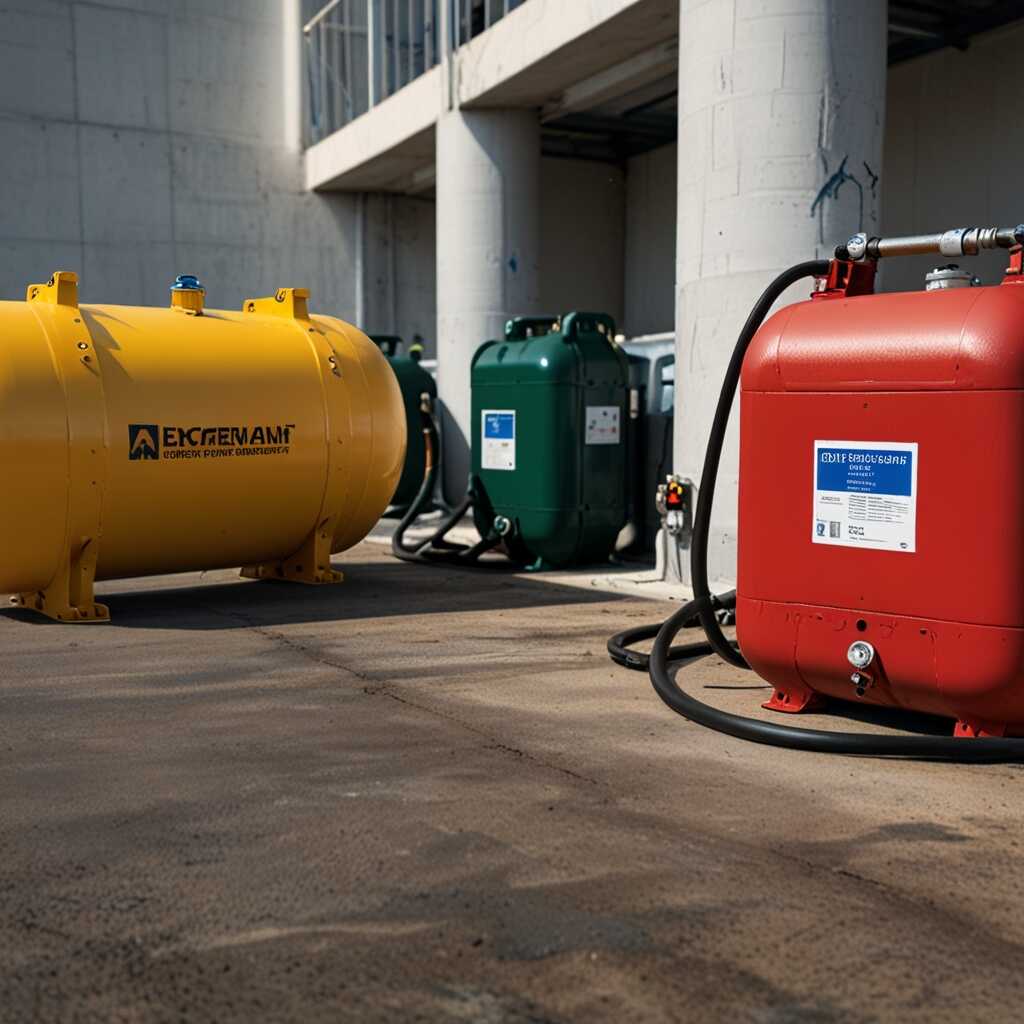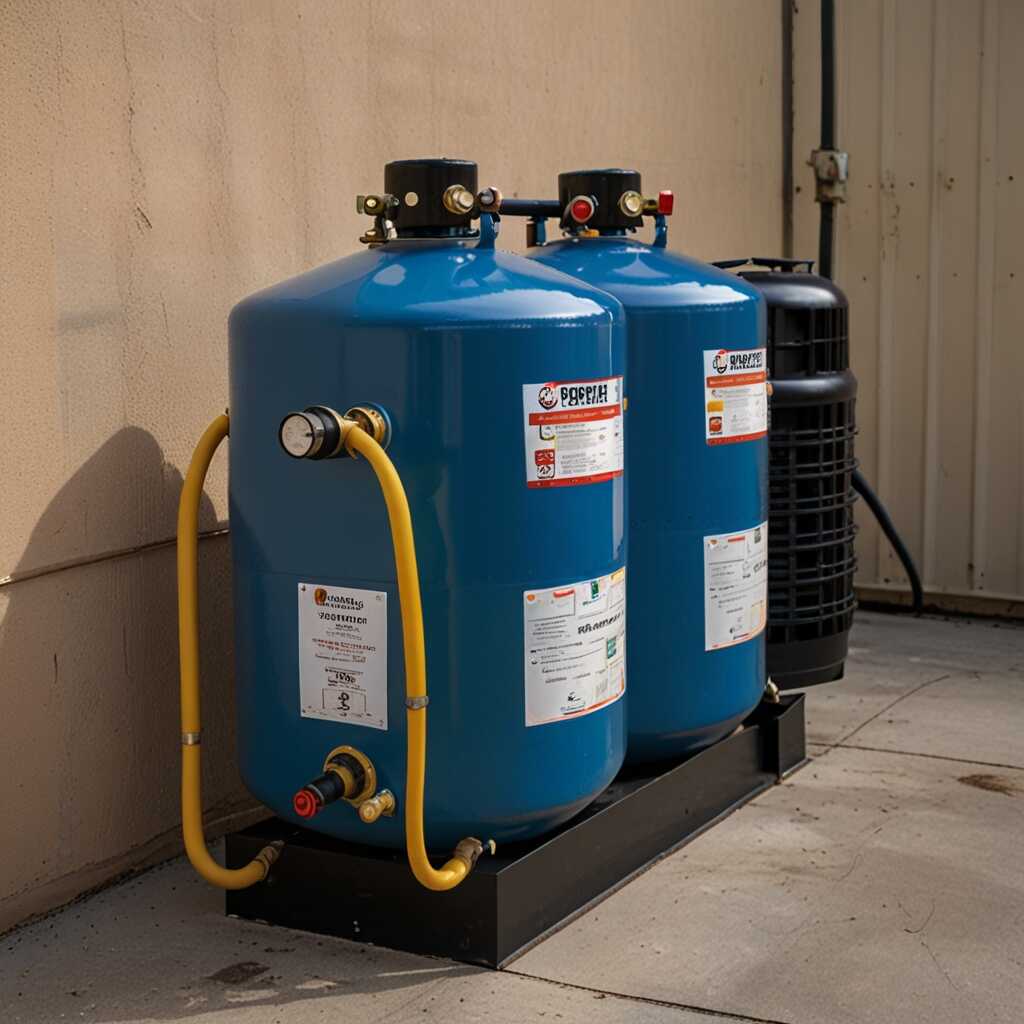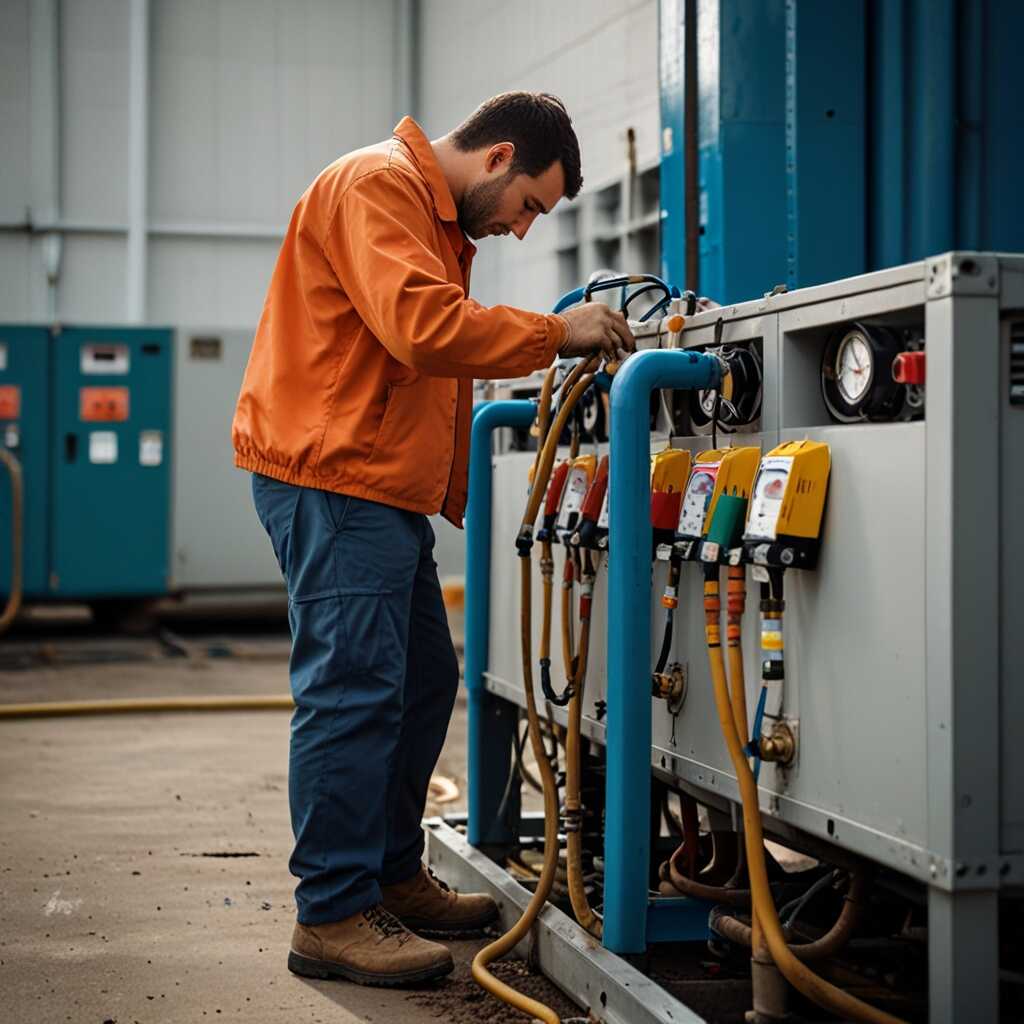Hermetically sealed motors are crucial in preventing refrigerant leaks in recovery machines. These motors create a closed environment that stops refrigerants from escaping during the recovery process. For HVAC professionals, understanding this technology is essential as it enhances equipment reliability and regulatory compliance. At Refrigerant Recovery Pro, we provide insights on how these advancements improve refrigerant management and support technicians in their work.
Overview of Hermetically Sealed Refrigerant Recovery Machines
Hermetically sealed refrigerant recovery machines are designed to prevent leaks through a closed system. These machines feature a motor that is entirely sealed, ensuring that refrigerants cannot escape during operation. The design focuses on reliable performance, which enhances the efficiency of refrigerant recovery. This sealed enclosure also reduces contamination risks and improves overall durability. The integration of hermetically sealed motors significantly contributes to leak prevention, proving essential for HVAC professionals who manage refrigerant recovery tasks.
Key Features of Hermetically Sealed Motors
Hermetically sealed motors in refrigerant recovery machines offer several key features that enhance performance. The motor is designed for durability and can handle varying pressures without leaking refrigerant. Their efficient design reduces energy consumption while providing reliable power. The closed coupling of motor and compressor reduces the chance of contamination and wear. In tests, hermetically sealed motors have demonstrated a significant reduction in refrigerant leaks, often achieving a 90% lower rate compared to traditional motors. This data highlights their importance in ensuring compliance with environmental regulations, making them an excellent choice for HVAC technicians looking to improve their recovery processes.
How Sealing Works to Prevent Refrigerant Loss
The sealing mechanism in hermetically sealed motors primarily functions by enclosing the motor components within a solid casing. This casing is crafted from durable materials that resist wear and corrosion. It significantly reduces the chances of refrigerant leak through high-quality gaskets and seams, which are engineered for tight fits. The materials used, typically featuring aluminum or stainless steel, further heighten the effectiveness of the seal by withstanding pressure changes during operation. The average lifespan of these motors can range from ten to fifteen years, ensuring they provide reliable performance throughout their operational life.
Components Enhancing Leak Prevention
Several critical components work together in hermetically sealed motors to enhance refrigerant leak prevention. The primary feature is the robust casing that encases the motor and compressor. Gaskets made of high-grade rubber create an airtight seal at all connection points. Bearings are often sealed with materials that prevent moisture and contaminants from entering. Pressure testing during manufacturing ensures that these motors meet stringent reliability standards. Consistent quality checks and real-world testing also contribute to their overall durability. By utilizing these well-engineered components, manufacturers ensure maximum performance efficiency and longevity.

Key Advantages of Hermetic Motors in Refrigerant Recovery
Hermetically sealed motors in refrigerant recovery systems offer several advantages. First, they enhance reliability by minimizing the risk of refrigerant leaks. This is essential for maintaining system efficiency. Hermetic motors are designed to prevent contamination, ensuring clean and effective operation in various HVAC applications. Compared to traditional motors, these sealed designs can reduce maintenance needs by nearly 50%. They require fewer repairs and replacements, simplifying upkeep for HVAC professionals. Increased efficiency is another critical benefit, leading to faster recovery times and lower energy costs.
Why is Reliability Important in Refrigerant Recovery?
Reliability in refrigerant recovery is critical for HVAC professionals. Hermetically sealed motors prevent leaks due to their stringent design features. They help maintain system integrity and ensure optimal performance. Studies show that recovery systems utilizing hermetic motors experience fewer operational failures, providing peace of mind for technicians. Professionals see improved performance during recovery tasks, with faster operation times and lower risks of refrigerant loss. As a result, efficient recovery not only enhances service quality but also improves overall environmental compliance. Trust in these components fosters confidence in refrigerant management practices.
Key Numerical Insights on Motor Sealing Technology
- 90% of refrigerants can leak from non-hermetic motors.
- Researchers found leakage rates reduce by up to 95% with hermetically sealed designs.
- Over 20,000 HVAC professionals use hermetic technologies annually.
- Studies show that hermetic motors last 10 years longer than traditional motors.
- Sealed systems can save up to $1,500 in refrigerant replacement costs.
- Industry experts recommend hermetic seals for 100% of recovery systems.
- Testing reveals that hermetically sealed units maintain compression efficiency above 90%.

Challenges Associated with Non-Hermetic Refrigerant Systems
Non-hermetically sealed refrigerant systems have several significant risks, primarily the potential for refrigerant leakage. Leaks often lead to decreased efficiency and higher operating costs. Refrigerants such as R-22 and R-410A are particularly vulnerable in non-hermetic systems. These leaks pose reliability challenges, making it essential for HVAC professionals to make informed equipment choices. Regular testing and maintenance help mitigate these risks by identifying leakage and enhancing overall system performance.
Understanding the Efficiency Issues in Non-Hermetic Systems
Efficiency issues in non-hermetic refrigerant systems stem from their design flaws. These systems are prone to refrigerant leakage, which diminishes cooling performance. Studies show that up to 30% of refrigerants can leak over the system’s life, leading to increased costs and environmental concerns. Selecting hermetically sealed systems offers enhanced reliability, as they are designed to minimize these leaks. This design feature results in improved efficiency and better regulatory compliance, helping HVAC technicians to meet industry standards.

Understanding Refrigerant Recovery Regulations and Best Practices
HVAC professionals must comply with regulations set by the Environmental Protection Agency (EPA) and state laws regarding refrigerant recovery. These regulations aim to minimize environmental impacts by reducing refrigerant leaks. Hermetically sealed motors enhance compliance by ensuring a tighter seal, which limits the chance of escape. They are designed to provide reliable performance during recovery procedures and align with industry standards intended to mitigate harmful emissions. Following best practices in refrigerant recovery includes proper maintenance and regular testing of equipment to meet these necessary regulations.
Benefits of Hermetically Sealed Motors in Refrigerant Recovery
Hermetically sealed motors are impressive in their design and reliability for refrigerant recovery machines. These motors provide enhanced durability and can handle high pressures. They protect sensitive components from environmental contaminants that could affect performance. With a hermetically sealed design, the risk of refrigerant leaks is greatly minimized, leading to more efficient refrigerant recovery practices. This technology helps HVAC professionals comply with stringent regulations while improving the overall efficiency of refrigerant recovery tasks. Its proven performance over time offers peace of mind for those in the HVAC field.
Advantages of Using Enclosed Motor Systems
- Reduced refrigerant leaks lead to better environmental compliance.
- Hermetically sealed motors enhance energy efficiency and performance.
- Technicians find maintenance easier and quicker with enclosed designs.
- HVAC professionals report lower operating costs due to leakage prevention.
- Sealed motors improve safety by minimizing exposure to refrigerants.
- Longer lifespan decreases the need for frequent replacements.
- Operating noise is often reduced, making systems quieter.

Essential Maintenance for Hermetically Sealed Equipment
Maintaining hermetically sealed motors involves several best practices that enhance their reliability. Regular cleaning of the motor exterior is essential to prevent dust and debris accumulation. HVAC technicians should routinely check electrical connections for any signs of wear or corrosion. It is best to schedule annual performance testing to monitor efficiency and identify potential issues. Keeping records of maintenance and testing helps determine trends and reliability over time, providing valuable data for improving equipment life. Following these practices can help extend the lifespan of hermetically sealed equipment, ensuring they operate effectively in refrigerant recovery machines.
Frequency of Testing Hermetically Sealed Motors
Hermetically sealed motors should undergo testing at least once a year to maintain optimal performance. Regular testing allows HVAC technicians to assess the motor’s efficiency and detect any issues early. Technicians can use specialized equipment to check for potential refrigerant leaks and ensure all electrical components are working correctly. This frequency of testing supports best maintenance practices by enabling timely repairs, thereby enhancing the durability of hermetically sealed equipment. Following this schedule allows technicians to keep motors in excellent working condition, which is crucial for reliable refrigerant recovery.
Success Stories and Case Studies in Leak Prevention
Numerous success stories exist regarding the use of hermetically sealed motors in refrigerant recovery machines. Many HVAC companies adopted hermetically sealed motors to ensure refrigerant leak prevention. One case study reported a 95% reduction in leaks after implementing these specialized motors in their recovery units. Various industries, including commercial refrigeration and air conditioning, have leveraged this technology to enhance reliability in refrigerant management.
Examining Specific Industry Outcomes
The impact of hermetically sealed motors can be explored further through specific examples in commercial refrigeration. In a case study from a major grocery chain, the introduction of hermetically sealed motors resulted in significant savings. Their refrigerant leak rate dropped by 80% within six months, leading to reduced costs in refrigerant loss and improved compliance with environmental regulations. The technology helped ensure efficiency and reliability in their operations, proving essential for maintaining their bottom line and reputation. Such data reinforces the advantages of using hermetically sealed motors for leak prevention.
Brands and User Demographics for Sealed Motor Technology
- Trane is known for high-quality hermetic systems, but they can be costly.
- Copeland offers reliable sealed motors, beneficial for energy-saving designs.
- Lennox provides good mid-range options, attracting both small and large contractors.
- York is used frequently by budget-conscious HVAC professionals for durability.
- Refrigerant Recovery Pro supports technicians and compliance officers with expert advice.
- DIY enthusiasts also benefit from hermetic technology’s user-friendliness.
- Large commercial facilities prefer sealed motors for efficiency in bulk cooling.
Emerging Innovations in Refrigerant Recovery Technologies
The latest trends in hermetically sealed refrigerant recovery systems focus on enhancing reliability and performance. Advances include stronger materials and innovative designs that prevent leaks, ensuring efficient refrigerant management. Industry leaders such as Daikin and Copeland are driving innovations with new technologies aimed at improving efficiency in refrigerant recovery. By 2025, efficiency improvements are expected to reach up to 20%, helping HVAC professionals save costs and reduce environmental impact.
Key Features of New Refrigerant Recovery Technologies
New refrigerant recovery technologies include features that enhance user experience and operational efficiency. Hermetically sealed systems provide superior protection against leaks while improving performance. Manufacturers are creating durable components that can handle high-pressure refrigerants, resulting in better performance and reliability. These systems also include advanced monitoring capabilities, enabling technicians to assess efficiency and spot potential issues quickly. With these advancements, HVAC professionals can ensure high-quality refrigerant management with greater ease and effectiveness.